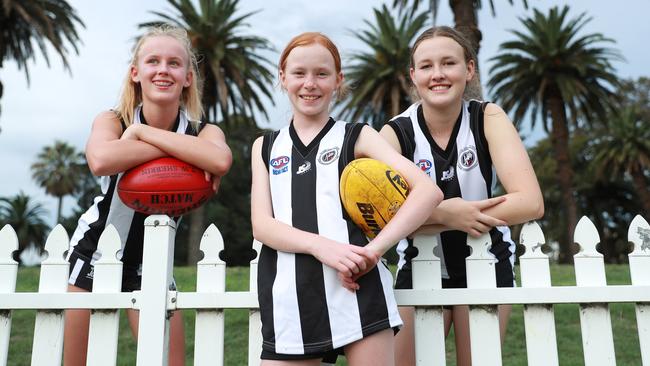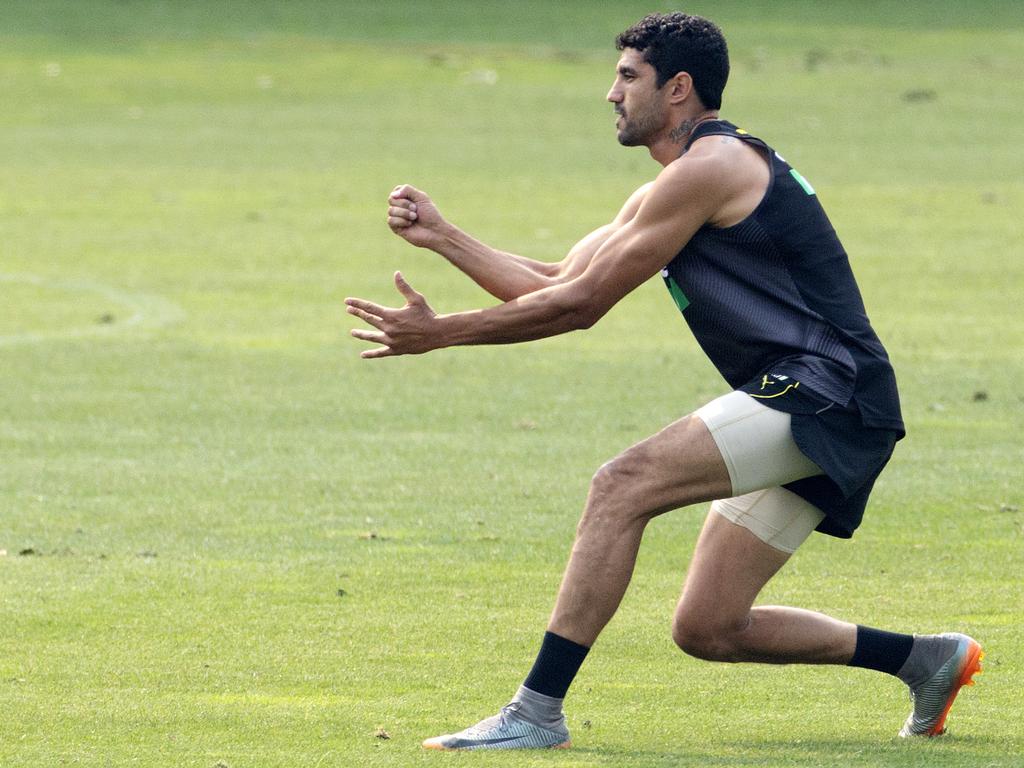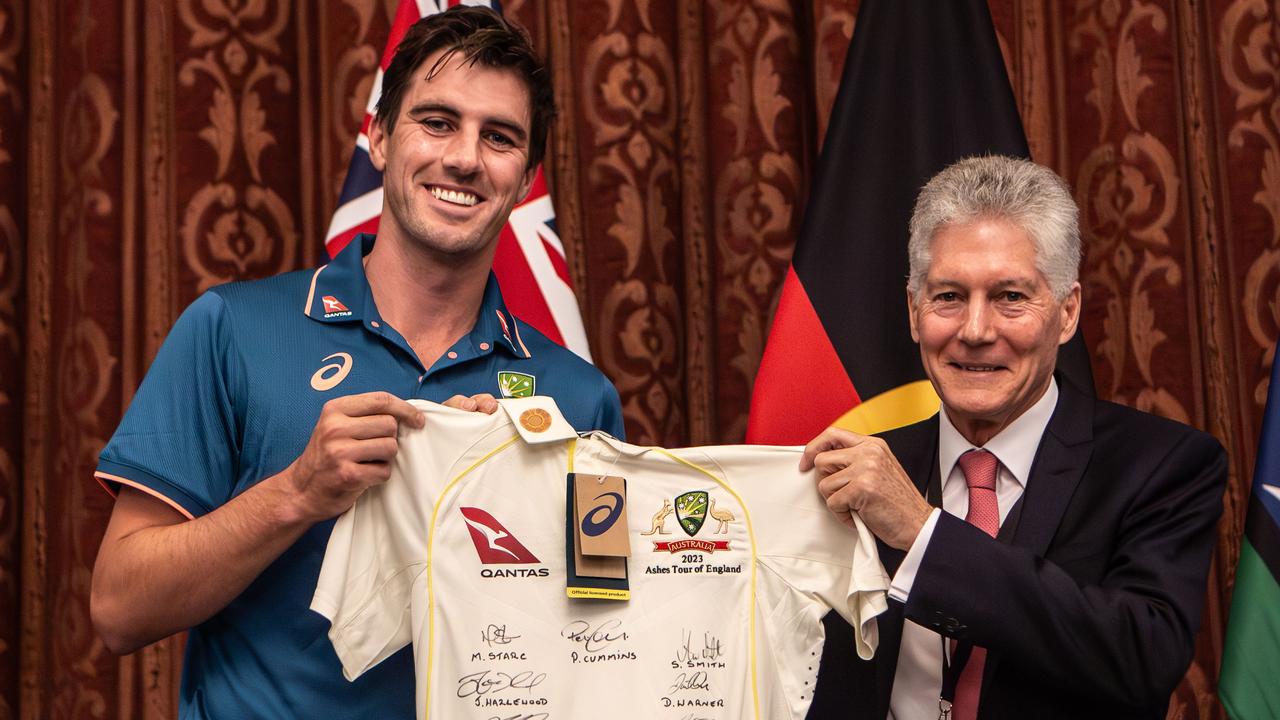AFL kicks $50m goal as girls pull on the boots
The AFL is drawing record crowds and recruiting a new generation of women, confirming Aussie rules as the nation’s sporting powerhouse.

The AFL is kicking financial goals, drawing record crowds and recruiting a new generation of female stars in a historic performance that confirms Aussie rules as the nation’s sporting powerhouse.
Women and girls are pulling on the boots in such numbers that, on Tuesday, AFL Commission chairman Richard Goyder credited their involvement as powering the success of footy at both the community level and in the elite AFLW competition.
“The desire of women and girls to be part of our game at every level drives our growth,” he said.
The AFL’s 2019 financial results — headlined by a net profit of almost $50m — reveal that female participation jumped almost 11 per cent last year, with 586,422 women and girls playing the game.
The booming result for female footy at the grassroots is matched at the elite level, with the AFLW expanding last year with the addition of North Melbourne and Geelong teams. Almost 250,000 fans attended an AFLW game, with more than 50,000 watching the grand final at Adelaide Oval.
Despite the impressive results in the women’s game, the financial figures show that it is the men who still earn the big money, with nine of the AFL’s 850 male players pulling in more than $1m a season. The seven-figure stars are believed to include Buddy Franklin, Josh Kelly, Scott Pendlebury, Patrick Dangerfield, Dusty Martin and Nat Fyfe.
The president of Sydney’s Glebe Greyhounds Junior Australian Football Club, Simon Tracy, called for greater investment in grassroots facilities but said the AFL’s profit demonstrated the health of the code.
“It shows how well it’s run,’’ he said. “Whether that’s at the top level or whether that’s down to grassroots, it’s a game that you love. Girls’ teams and girls’ footy have exploded and we have seen such a fantastic growth.
“But the girls have nowhere to get changed. The public toilets are what I like to describe as authentic but, honestly, it’s embarrassing that girls would have to go and get changed in those toilets.”
The AFL’s 2019 financial results reveal it is the clear leader in financial terms, with a net profit of almost $48.5m for 2019.
Such is its financial strength that it has made combined profits of almost $150m in the past three years, while paying down debt and booking revenue and profits ahead of budget forecasts because of increasing sponsorship deals and strong finals series.
“The success and popularity of the game can be attributed to so many at all levels, both community and elite, who contribute so much,” Mr Goyder said. “Our men’s competition continues to be strong — a year of records across home and away attendance, membership and participation.”
Last year’s AFL premiership season attracted combined crowds of 6.951 million spectators across 198 matches and the clubs signed up 1.057 million members, the third consecutive season membership topped one million.
The league also has net assets of about $240m on its balance sheet and contributed $20m to a reserve fund that now stands at about $60m. Revenue increased by $15.3m to a record $793.9m.
Executives including chief executive Gillon McLachlan and the AFL commission shared in $10.57m total payments in 2019, slightly down from the $10.73m in the previous year.
On consolidated terms, which includes its Marvel Stadium ownership, a share in Champion Data and its state subsidiaries, the AFL recorded a $27.9m surplus, up from $25.9m in 2018.
At least 16 of the 18 AFL clubs made cash profits last year, with a spending cap on football departments combined with bigger central grants to smaller or struggling teams leading to closer matches, and bigger crowds and TV ratings.
West Coast is likely to reveal next month the biggest club profit, with expectations of a net profit of at least $7.5m.
Grand final winner Richmond achieved a $4.1m net profit from $92.2m revenue, and Hawthorn announced a net operating surplus of $2.15m for 2019.
Even traditional powerhouse Carlton, which has struggled for years on the field, enjoyed a resurgence in financial terms. It recorded a net profit of $2.5m excluding government grants.







To join the conversation, please log in. Don't have an account? Register
Join the conversation, you are commenting as Logout